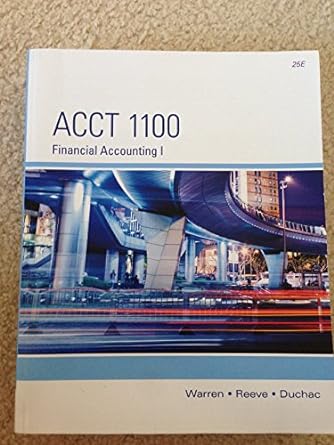Question
Balance Sheet Use the following balance sheet form to enter amounts you identify from the computations on the Liquidity and Solvency Measures part. You will
Balance Sheet
Use the following balance sheet form to enter amounts you identify from the computations on the Liquidity and Solvency Measures part. You will identify other amounts for the balance sheet on the Profitability Measures part. If you have a choice of two amounts, assume the first amount in the ratio is for the end of the year. Compute any missing amounts.
Balance Sheet December 31, 20Y6
Assets
Current assets:
Cash$823,000
Marketable securities
Accounts receivable (net)
Inventory
Prepaid expenses
Total current assets$
Long-term investments
Property, plant, and equipment (net)
Total assets$
Liabilities
Current liabilities$
Long-term liabilities
Total liabilities$
Stockholders' Equity
Preferred stock, $10 par$
Common stock, $5 par
Retained earnings
Total stockholders' equity$
Total liabilities and stockholders' equity$
Feedback
Identify the amounts in the Liquidity and Solvency Measures panel and the Profitability Measures panel that are balance sheet items and enter them accordingly.
Profitability Measures
Match each computation to one of the profitability measures in the table.
Profitability Measures Computations
Asset turnover $8,250,000 [($5,781,000 + $5,591,000) 2]
Return on total assets ($786,300 + $127,000) [($6,605,000 + $6,415,000) 2]
Return on stockholders' equity $786,300 [($4,055,000 + $3,852,250) 2]
Return on common stockholders' equity ($786,300 $65,000) [($3,567,500 + $3,424,800) 2]
Earnings per share on common stock ($786,300 $65,000) 250,000 shares
Price-earnings ratio $35 $3.05
Dividends per share $175,000 250,000 shares
Dividend yield $0.70 $35
Feedback
Look for patterns in the computations and match them to ratios that are related to each other. Identify the amounts in the computations and consider how they are related to amounts in other computations. Note that two of the computations use shares.
Comparative Income Statement
Use the following comparative income statement form to enter amounts you identify from the computations on the Liquidity and Solvency Measures part and on the Profitability Measures part. Compute any missing amounts and complete the horizontal analysis columns. Enter percentages as decimal amounts, rounded to one decimal place. When rounding, look only at the figure to the right of one decimal place. If < 5, round down and if 5, round up. For example, for 32.048% enter 32.0%. For 32.058% enter 32.1%.
Comparative Income Statement For the Years Ended December 31, 20Y6 and 20Y5
Increase/(Decrease)
20Y620Y5AmountPercentage
Sales $ $7,257,000 $ %
Cost of goods sold (3,444,000) %
Gross profit $ $3,813,000 $ %
Selling expenses $ $(1,451,000) $ %
Administrative expenses (1,237,500) (1,101,500) %
Total operating expenses $ $(2,552,500) $ %
Operating income $ $1,260,500 $ %
Other expense (interest) (120,600) %
Income before income tax expense $ $1,139,900 $ %
Income tax expense (178,200) %
Net income $ $961,700 $ %
Feedback
Step by Step Solution
There are 3 Steps involved in it
Step: 1

Get Instant Access to Expert-Tailored Solutions
See step-by-step solutions with expert insights and AI powered tools for academic success
Step: 2

Step: 3

Ace Your Homework with AI
Get the answers you need in no time with our AI-driven, step-by-step assistance
Get Started


